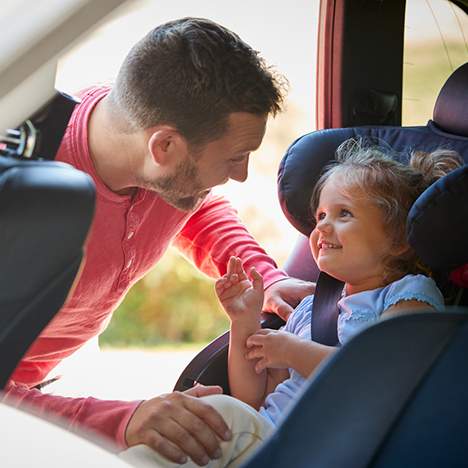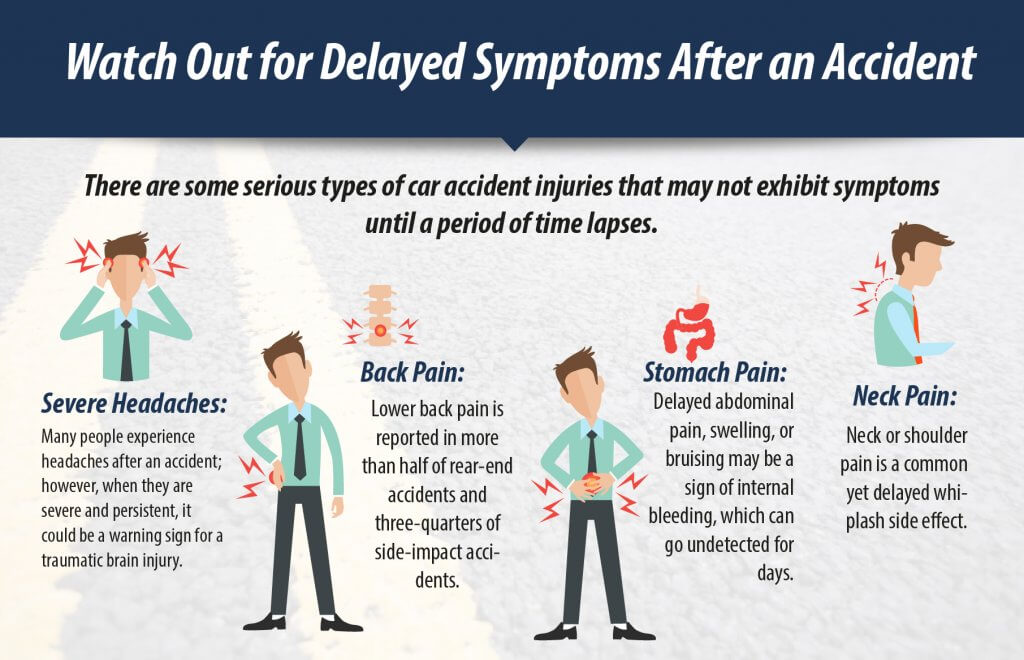[2021 Update]: In an encouraging trend, deaths resulting from a car accident with children present (defined as under the age of 13) have steadily decreased since 1975. Even so, according to the Insurance Institute for Highway Safety [IIHS], vehicle collisions still account for 1 out of 4 unintentional deaths in the United States, with 612 passenger vehicle occupant deaths recorded among children in 2019 (the most recent year with data available). Read on to learn what to do after an accident and when to seek a car accident settlement for a child.
It’s never pleasant planning for your worst nightmare, but being prepared can make an instrumental difference when forced to act fast under pressure if one day you’re forced to tell emergency responders: “My child was in a car accident.” Serious car crashes can emit a range of emotions from shock and adrenaline to anger and irrational thinking. When our children are also in the car, these emotions are instantly intensified, and rightfully so. Although no parent hopes to find themselves in this situation, it’s a tragically common occurrence, with more than 120,000 children (ages 12 and younger) injured in a traffic collision in 2014 alone.
Getting to Safety After a Car Accident With Children
While your initial parental instinct might be to check on your child, your first priority should be preventing a secondary crash. After a fender bender, safely pull the car to the side of the road. Staying in the middle of busy lanes (or near turns) greatly increases your risk of being hit again. For severe accidents, call 911 and follow their instructions while you wait for police and EMTs to arrive.
Once in a safer position, you can check on your child. However, most experts suggest waiting on EMTs to pick up or move a child in a car seat. This is arguably the hardest piece of advice for parents, but improperly moving a child can worsen any and all injuries.
As babies and toddlers continue to grow, their necks remain a flexible and fragile area. Unfortunately, this flexibility makes children more vulnerable to spinal cord injuries, especially in car accidents. It’s best to remain overly cautious as children may not be able to effectively communicate if and where they feel pain, and it can be especially dangerous to move a toddler after car accident injuries before EMTs arrive.
Children and Toddlers in Car Accidents Are More Susceptible to Certain Injuries
While you wait for the EMTs, carefully monitor your child for injury symptoms including heavy or abnormal breathing, bleeding from the mouth or nose, and abnormal speech. Even if you see no initial signs of pain, always allow the medical experts to do an examination (of both you and your child).
After your child receives care from an emergency room doctor, request all medical records be sent to your pediatrician. These documents will be important information should any injuries develop later on, as well as for overall health monitoring. Give the pediatrician a few days to review the information and schedule a follow-up appointment to ensure there’s no delayed onset of injuries.
If your child does not see an ER doctor, schedule the earliest available appointment with your pediatrician. Explain the crash circumstances and any differing behavior you’ve noticed since the crash. Follow the pediatrician’s instructions from there.
Motor Vehicle Child Injuries and Symptoms to Watch for After a Car Crash
If you have been involved in a car accident, even one that seems minor on the surface, you need to be aware that injures might have occurred and yet will not exhibit symptoms for some time. You must seek a medical evaluation after a car accident if you think you or your children are experiencing any symptoms of injury, as there are some serious types of car accident injuries that may not exhibit symptoms until a period of time lapses. The same should be noted for any children or toddlers in car accidents.
Do Not Minimize Headaches

If you (or any of your children) develop a headache two or three days after a car accident, you need to consider it a warning sign that you have been injured. A headache that develops after a couple of days passes from the occurrence of a car accident can be a sign of concussion, another type of head injury, neck injury (including whiplash), or even a blood clot.
Back Pain
If back pain develops some time after an automobile collision, you may have sustained an injury to the muscles, ligaments, or nerves in your back. You may also suffer from injury to your vertebrae. If the pain goes into your arms or legs, you should consider seeing an orthopedic doctor. Some spine injuries cannot be detected by x-rays from the emergency room and require more sophisticated tests such as CT scans or an MRI to diagnose the problem. The same symptoms in children can be indicative of serious motor vehicle child injuries.
Abdominal Swelling, Bloating, or Pain
If you find yourself suffering from swelling or bloating around your midsection, with or without accompanying pain, you may have sustained internal injuries. You may be experiencing internal bleeding as a result of these types of injuries. You may also experience dizziness and fainting. This can be a truly life-threatening situation which requires immediate medical attention. Following a car accident with children present, you should keep a close lookout for these symptoms in your kids as well.
Alterations in Physical Function, Personality, or Emotions
The symptoms of traumatic brain injury are not always readily apparent. If after some time following the car accident you find yourself suffering from issues with certain physical functions, if others around you note changes in your personality, or if your emotions seem “out of whack,” you may have sustained a traumatic brain injury. It is important to speak with a doctor if you see these symptoms in your child or toddler after car accident injuries.

Do I Need to Replace My Child’s Car Seat After an Accident?
If a crash has the power to bend a car’s steel frame, it certainly has potential to damage a plastic car seat. The National Highway Traffic Safety Administration (NHTSA) recommends replacing car seats and boosters after a moderate and severe accident, while seats after minor accidents should be inspected on a case-by-case basis.
According to the NHTSA, a minor accident is when ALL of the below occur:
- The vehicle was able to be driven away from the crash scene
- The door(s) closest to the car seat suffered no damage
- No passengers suffered injuries
- No airbags deployed
- No visible damage to the car seat
Seats should be replaced even if your child was not in the seat at the time of the accident. Parents should follow the manufacturer’s instructions for further advice on replacements. If you no longer have the instructions, visit the company’s website for a downloadable version or call customer service.
What Should I Do if My Child Was in a Car Accident and I Can’t Afford a New Car Seat?
While you’ll likely have to front the costs of a new seat, many insurance companies will reimburse the full price with proof of purchase. Parents don’t have to buy the same make and model (unless otherwise stated in the insurance policy) of a car seat or booster, which can be ideal for children outgrowing their current size.
Take this chance to research the type of seat your child now needs. In general, infants and toddlers should sit in rear-facing car seats, preschoolers can sit in forward-facing seats with a harness, and school-aged children may sit in booster seats depending on their height and weight. You can also register your new seat through the NHTSA to receive any safety updates like notices or recalls from the manufacturer.
After physically recouping, replacing the car seat should be your first priority. Motor vehicle accidents are the leading cause of death in children. However, car seats decrease mortality rates by 71 percent for children under the age of one, and reduce injury by 54 percent in children ages one through four. Booster seats decrease risk of injury by 45 percent, according to the American Academy of Pediatrics.
Car crashes are never a pleasant experience, and can be absolutely terrifying for parents in the event of a car accident with children in the car. Remember to always buckle in young children before a trip, and to remain as calm as possible while following safety tips such as these immediately after a crash.
When to Pursue a Car Accident Settlement for a Child
In general, insurance companies are unlikely to provide more than the minimum amount of compensation for any given claim, and some companies won’t even cover the cost of a new car seat. This is why it’s important to consider the merits of a lawyer vs. insurance company when seeking compensation for the injuries suffered by you or your loved ones. The personal injury attorneys at Avrek Law have more than 50 years of combined experience recovering the maximum amount of compensation for injury victims and their families. With more than $1 billion recovered for clients, we’re here to help – contact us today for a free personal injury consultation!
